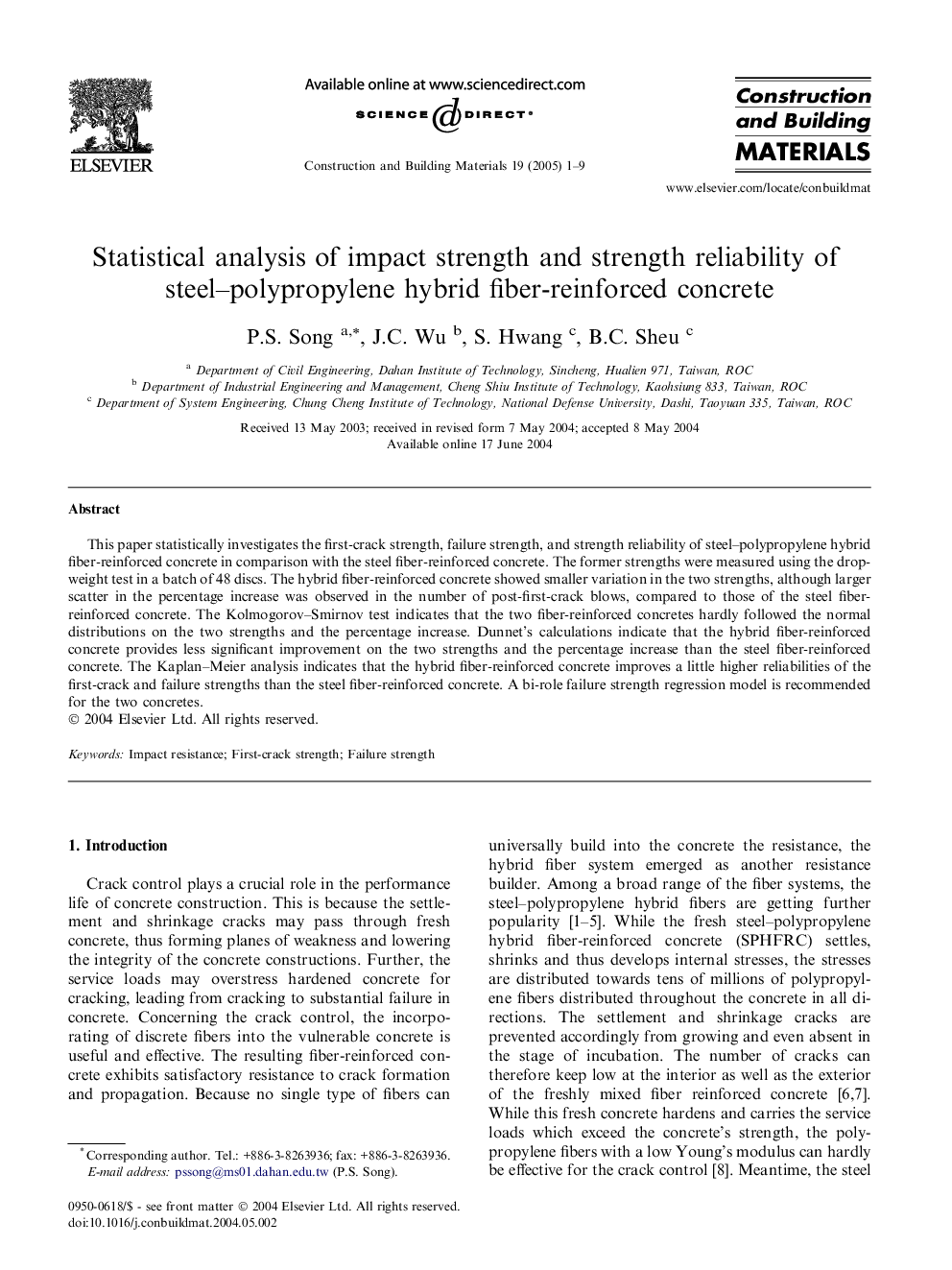| Article ID | Journal | Published Year | Pages | File Type |
|---|---|---|---|---|
| 10285591 | Construction and Building Materials | 2005 | 9 Pages |
Abstract
This paper statistically investigates the first-crack strength, failure strength, and strength reliability of steel-polypropylene hybrid fiber-reinforced concrete in comparison with the steel fiber-reinforced concrete. The former strengths were measured using the drop-weight test in a batch of 48 discs. The hybrid fiber-reinforced concrete showed smaller variation in the two strengths, although larger scatter in the percentage increase was observed in the number of post-first-crack blows, compared to those of the steel fiber-reinforced concrete. The Kolmogorov-Smirnov test indicates that the two fiber-reinforced concretes hardly followed the normal distributions on the two strengths and the percentage increase. Dunnet's calculations indicate that the hybrid fiber-reinforced concrete provides less significant improvement on the two strengths and the percentage increase than the steel fiber-reinforced concrete. The Kaplan-Meier analysis indicates that the hybrid fiber-reinforced concrete improves a little higher reliabilities of the first-crack and failure strengths than the steel fiber-reinforced concrete. A bi-role failure strength regression model is recommended for the two concretes.
Keywords
Related Topics
Physical Sciences and Engineering
Engineering
Civil and Structural Engineering
Authors
P.S. Song, J.C. Wu, S. Hwang, B.C. Sheu,
